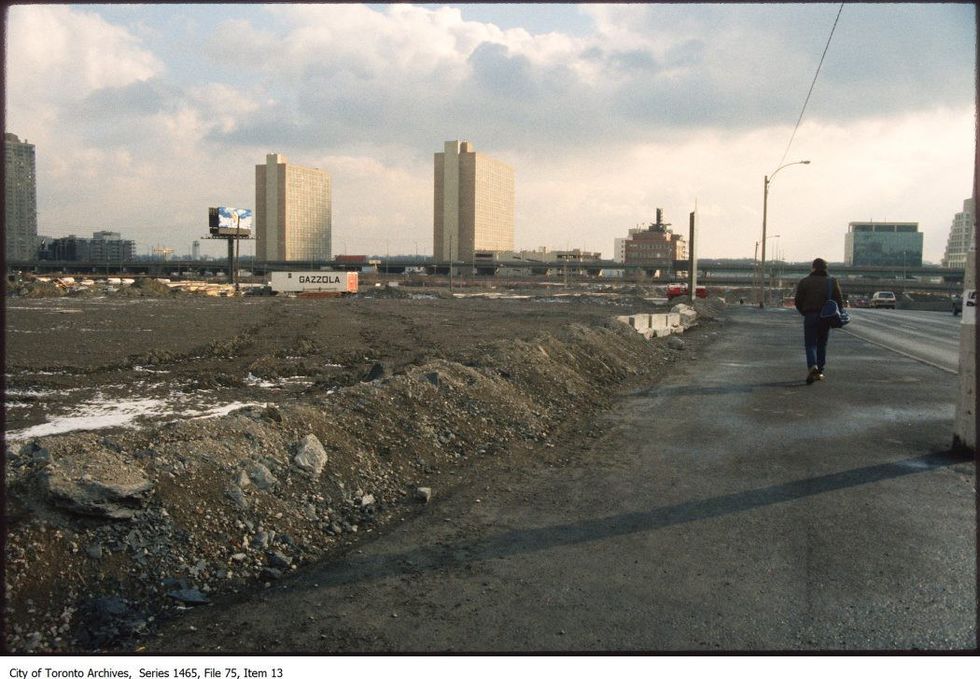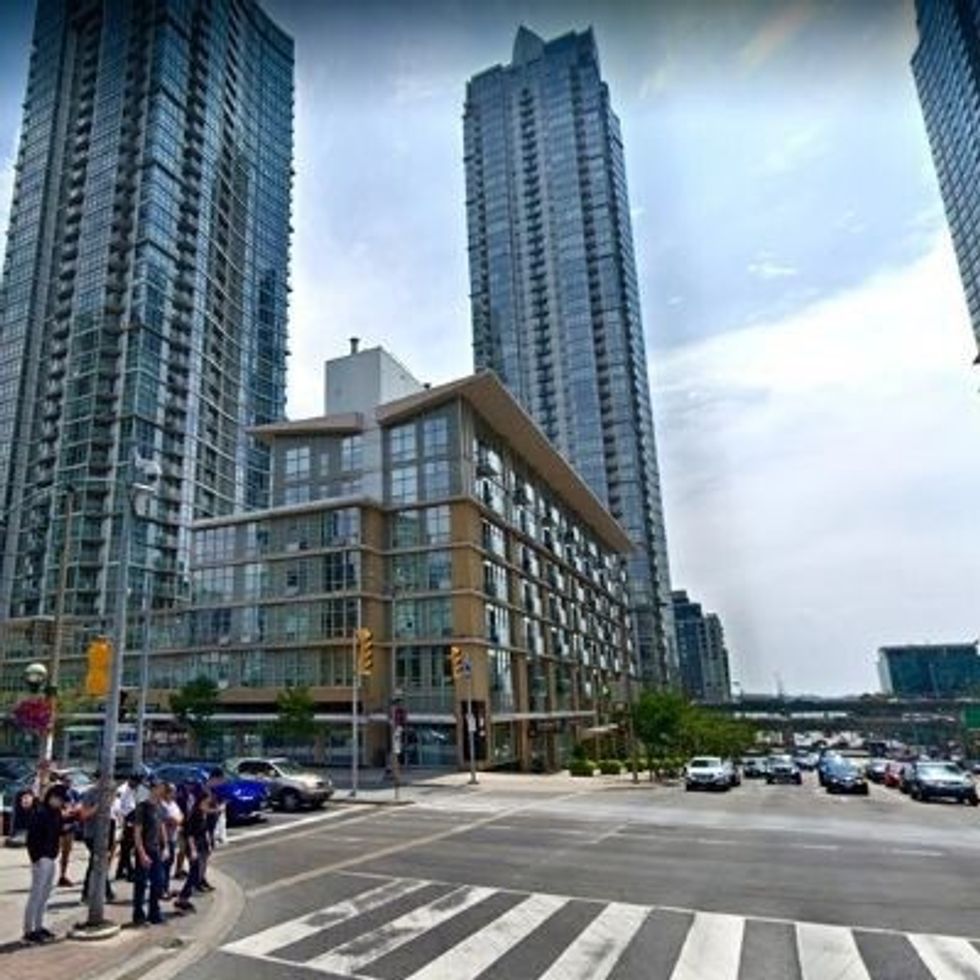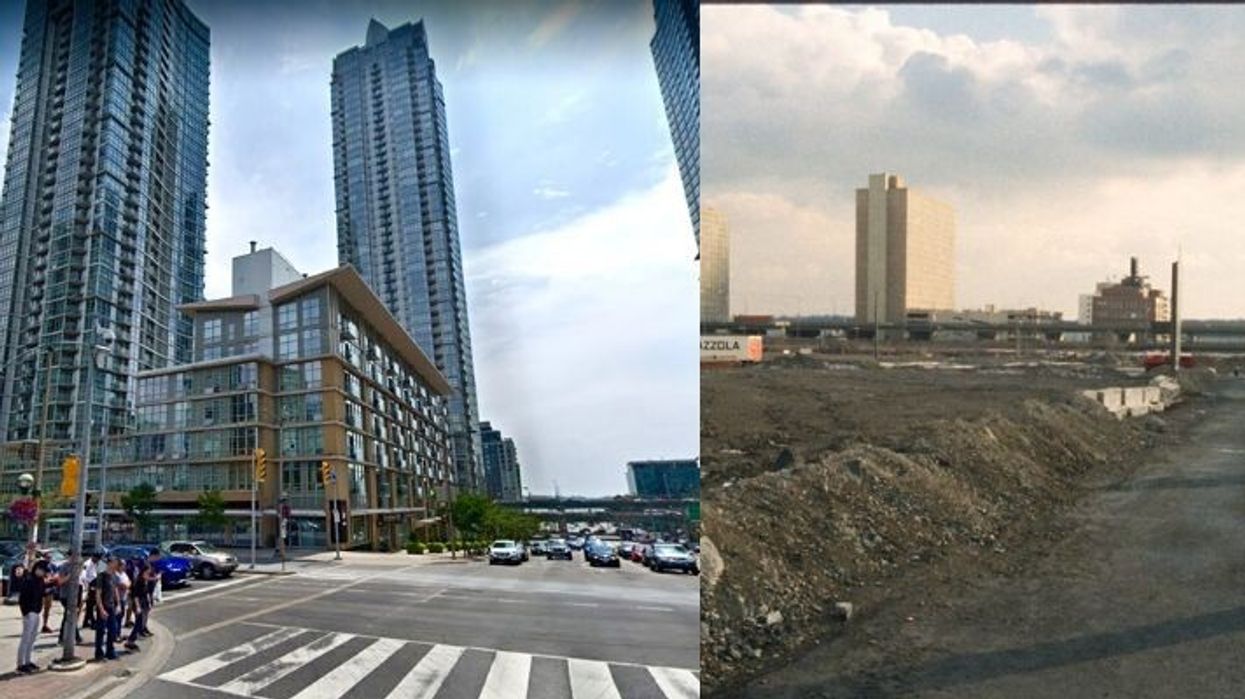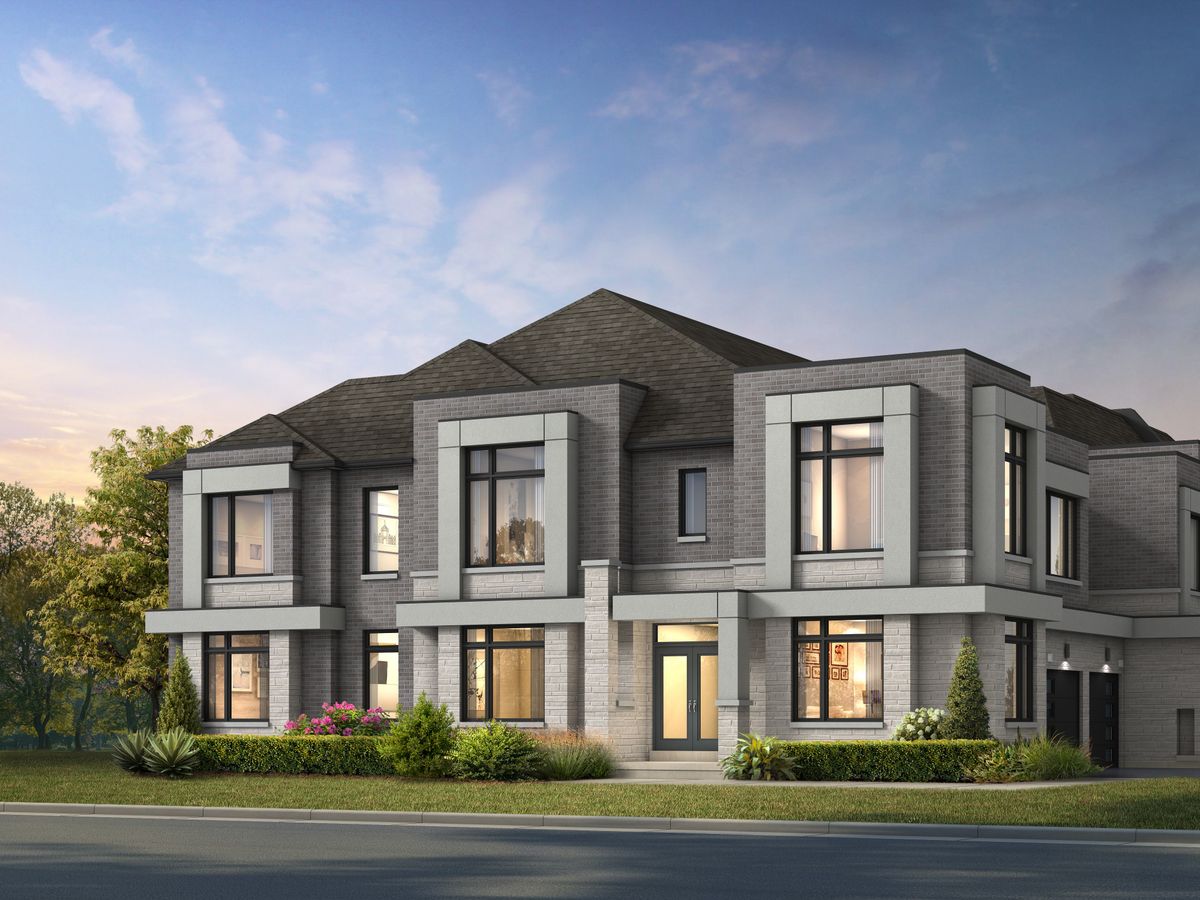Toronto has come a long way in the last two centuries.
From the Town of York to Drake’s 6ix, a lot has changed in the city of neighbourhoods – which is why we think it’s important to take a look every once in a while at what was, what is, and what will be. And there’s no better way to do that than by looking at the buildings, architecture, and development that has helped shape Toronto into the world-class city it is today.
READ: Now and Then: Queen and Parliament, Southwest Corner
So let’s get right down(town) to it – Spadina and Bremner.
Past

Describing south Spadina in the mid-1980s as “unrecognizable" would be a bit tame.
This stretch of road south of Bremner looks like a post-apocalyptic landscape, complete with lone wanderer on the shoulder, surrounded by loose piles of gravel and rocks. This is downtown Toronto? Well, not yet.
The open site to the left is where the SkyDome will be built within a few years. Fun fact: The official opening ceremony for the stadium on June 3, 1989, was met with a downpour of rain, but they opened the dome anyway. (The first Toronto Blue Jays game a few days later was a loss.)
This broader area — the Railway Lands — was highlighted for revitalization as early as the 1960s, but development progressed slowly in fits and starts.
When this photo was taken around 1986, the Millennial generation was just surfacing — born amid this pre-development rubble, Millennials would be the first full generation to struggle to afford to live in this city.
Present

Today, the area around Spadina and Bremner bustles with an abundance of lake-view condos, retail, hospitality, transit, green space, massive venues and tourist draws. Welcome to CityPlace. The area as a whole, once complete, will be the largest master-planned community in Toronto.
READ: Now and Then: King and Spadina, Northeast Corner
According to Concord CityPlace, the neighbourhood boasts fascinating demographics — roughly 18,000 residents, 81 per cent of whom are between the ages of 25 and 44. It’s an educated and affluent community with an average household income of $124,000 in 2016. Almost everyone here has a post-grad degree.
The SkyDome, renamed the Rogers Centre in 2004, just turned 30 years old last summer. From a guy carrying a duffel bag on a road shoulder to MBAs paying at least $2,500-$3,500 a month to live in a young, urban, waterfront playground, 30 years seems like the blink of an eye.
Future
The neighbourhood is still scorching.
Canada House, a mixed use project by Concord CityPlace, is currently rising up at Spadina and Bremner. Concord Adex razed its previous headquarters and presentation centre for this development — bringing two towers with a staggering 59 and 69 storeys. The population of CityPlace is about to bump another couple thousand.
And there’s significant pre-construction activity just north of this corner, near Spadina and Front: The ORCA Project has proposed eight towers; 400 Front Street West wants three towers; and 2 Clarence Square offers up an office building for companies seeking this young and educated workforce. RioCan’s mega-project The Well is already underway, with occupancy expected in its 46 storeys as early as 2023.
Lower Spadina tells us what we already know: Future generations of Torontonians will live in the sky. It just seems to happen a lot faster down here.





















